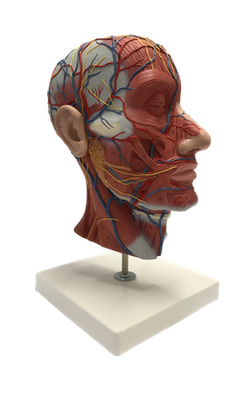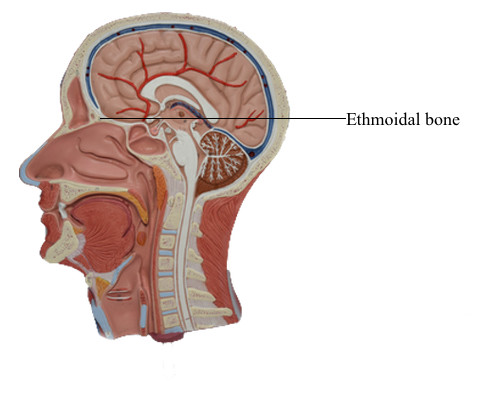Main Model

Bones : D Ethmoidal bone

The cranium (skull) is the skeleton of the head. A series of bones form its two parts, the neurocranium and viscerocranium. The neurocranium is the bony case of the brain and its membranous coverings, the cranial meninges. It also contains proximal parts of the cranial nerves and the vasculature of the brain. The neurocranium in adults is formed by a series of eight bones: four singular bones centered on the midline (frontal, ethmoidal, sphenoidal, and occipital), and two sets of bones occurring as bilateral pairs (temporal and parietal).
The neurocranium has a dome-like roof, the calvaria (skullcap), and a floor or cranial base (basicranium). The bones forming the calvaria are primarily flat bones (frontal, parietal, and occipital) formed by intramembranous ossification of head mesenchyme from the neural crest. The bones contributing to the cranial base are primarily irregular bones with substantial flat portions (sphenoidal and temporal) formed by endochondral ossification of cartilage (chondrocranium) or from more than one type of ossification. The ethmoid bone is an irregular bone that makes a relatively minor midline contribution to the neurocranium but is primarily part of the viscerocranium. The so-called flat bones and flat portions of the bones forming the neurocranium are actually curved, with convex external and concave internal surfaces.
Several bones of the cranium (frontal, temporal, sphenoid, and ethmoid bones) are pneumatized bones, which contain air spaces (air cells or large sinuses), presumably to decrease their weight. The total volume of the air spaces in these bones increases with age.